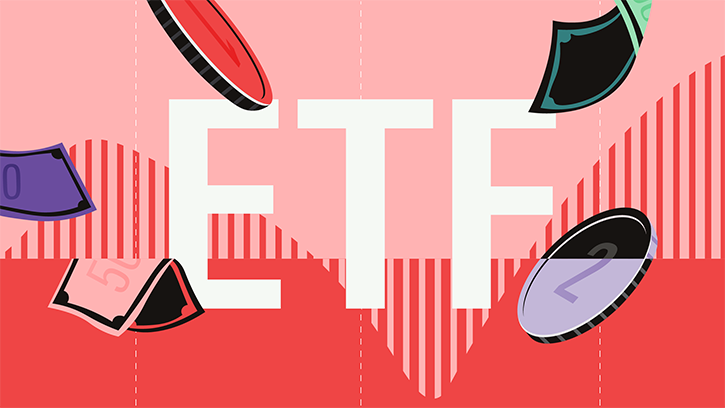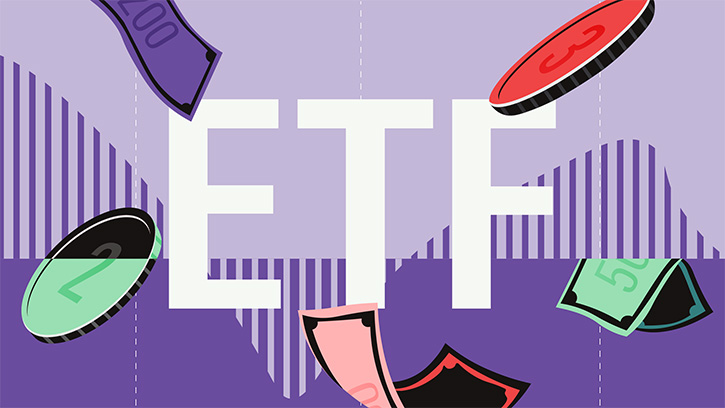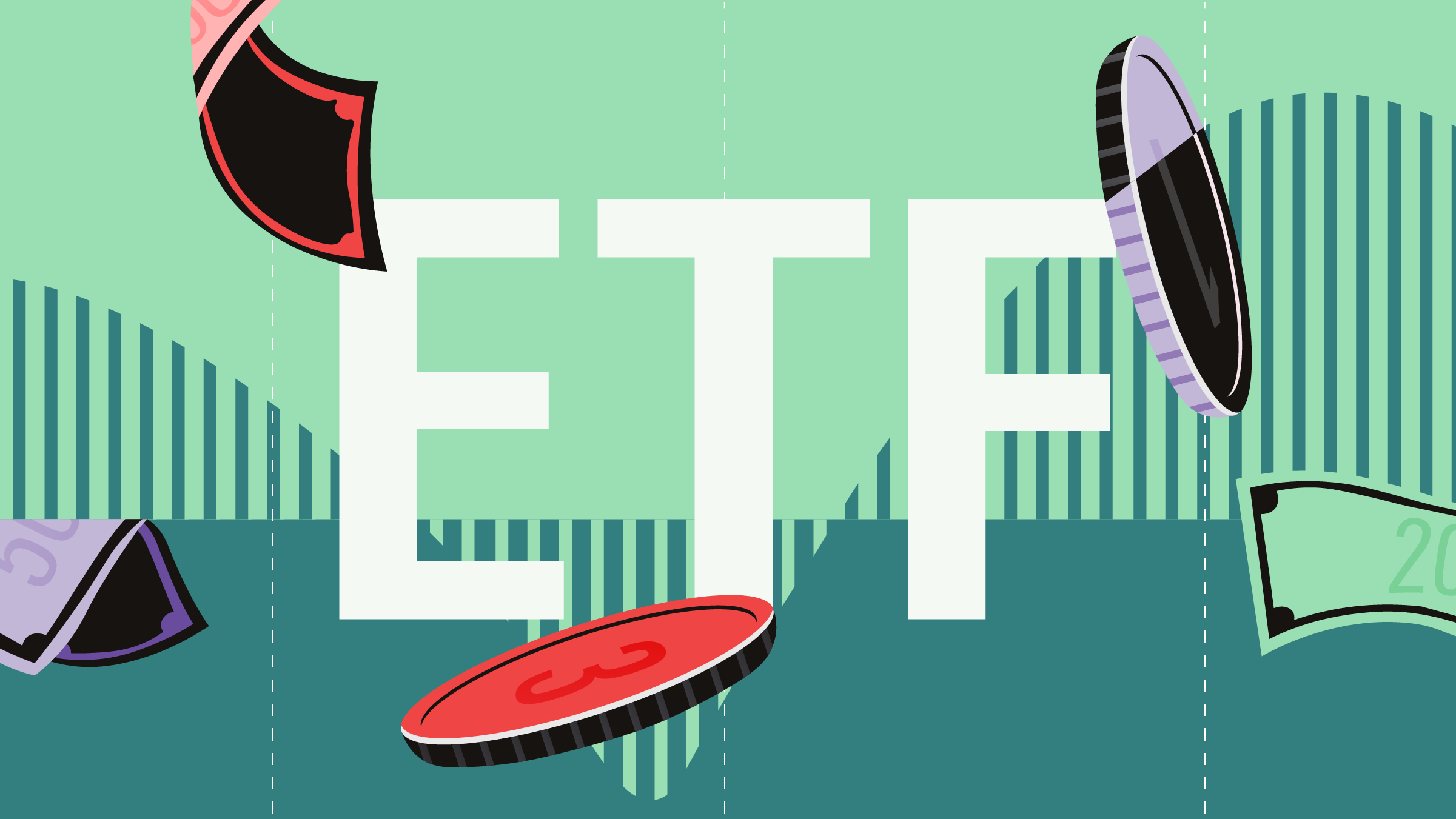Christine Benz: Hi, I'm Christine Benz for Moringstar.com. Exchange-traded funds garnered near-record inflows in 2015. Joining me to provide a recap of the past year in ETFs is Ben Johnson--he is director of global exchange-traded fund research with Morningstar.
Ben, thank you so much for being here.
Ben Johnson: I'm glad to be here, Christine.
Benz: Ben, when we look back on 2015, it was a very good year for inflows. ETFs saw inflows, as did traditional passively managed funds. Let's talk about the ETF flows. What types of funds were investors buying last year?
Johnson: So, it was the a great year for ETFs. They saw the second-most inflows ever, the second most in terms of number of net new launches ever, and a record numbers of new providers into the ETF space. When you drill down and you look at the types of ETFs that were gaining this net new money, they were generally pretty vanilla. S&P 500 ETFs were amongst the highest receivers of net new inflows. We also saw investors continue to add billions of dollars into developed ex-U.S. equity funds and currency-hedged ETFs--in particular, currency-hedged European-equity ETFs were particularly popular last year.
Benz: So, the idea there is that investors want a piece of foreign-market gains, but they want those gains denominated in U.S. dollars.
Johnson: Right. They want to be long Europe but short the euro.
Benz: So, in terms of new funds, what types of new funds are launching? The flows are going to the very vanilla products, but the launches aren't necessarily happening there.
Johnson: Anything you could imagine is being launched. If you have just the faintest, wildest idea of something--things that you only dream about--ETF providers are now launching that. But if you look at the composition of launches last year--and again, a near-record number of new ETFs were launched last year--it was the first time ever that the majority of new launches were strategic beta ETFs.
Benz: Let's explain what those are.
Johnson: Strategic beta, or what others call smart beta, is really a new type of active management. These indexes have embedded in them one or more active bets. They are going to look to bet on dividend stocks; they are going to look to bet on the value premium or low volatility or quality or some combination thereof. What we saw in particular is that amongst these new entrants--again, there were a record number of those last year in the ETF space--many were familiar faces that were making their first foray into the ETF space, launching multifactor strategic beta ETFs. So, included in that group would be the likes of John Hancock, who partnered with Dimensional Fund Advisors to develop indexes and launch ETFs based on those indexes; Goldman Sachs, who also entered the ETF market for the first time, launching a number of multi-factor-equity ETFs that we would put into that strategic beta bucket.
Benz: Is the entry of these more-traditional asset managers who have historically been more associated with active management their play to stay relevant in an era where we have seen this very strong demand for passive products?
Johnson: I would certainly say that it's a defensive measure on their part. What we saw last year is that the outflows from actively managed U.S. equity funds reached record levels, and active managers are sick of seeing money move out the door and sick of seeing ETFs really gain an ever-larger share of the U.S. funds landscape. So, they are entering this market largely on the defense and offering something that, from their perspective, is more palatable to the extent that, again, it's an active bet--these are generally active shops--and more palatable, too, from the fee perspective.
Benz: They can charge higher fees.
Johnson: They can charge higher fees than they might for a total stock market index fund.
Benz: So, it sounds like a little bit of a mismatch, though, in terms of flows. You're saying generally we're seeing those go to the very vanilla, sort of capitalization-weighted products, but the new launches aren't necessarily in those areas. In fact, there are probably enough products that fill that vanilla cap-weighted role already, so the new product launches are coming in the realm of some of these strategic beta products.
Johnson: The white space has been covered off in terms of the very vanilla cap-weighted exposures, and what we're seeing is an instance in which the more things are changing in this space, the more they're staying the same. The top three providers--if you look at iShares, Vanguard, and State Street--still account for 80% of overall ETF assets. If you look at the 1,800-plus exchange-traded products that are out there, the top 100 of them still have about three quarters of investors' money. And uniformly, those top 100 are very vanilla, they are extremely inexpensive, and they are broadly useful for a huge number of investors. So, I think investors will continue to focus most of their time and attention, as they well should, on very low-cost, broad, very well-diversified market exposures.
Benz: When you look at the big three, whom you just mentioned--BlackRock, State Street, and Vanguard--have you seen market share kind of shift among those three players over the past several years?
Johnson: Absolutely. I think, most notably, what you've seen is that amongst those top three, the rankings of Vanguard and State Street have switched here recently. A lot of that has to do with slow and steady market share gains by Vanguard, which continues to grow ETF assets at a pretty impressive clip, all things told. State Street is suffering, to a certain extent, by virtue of the fact that SPY--the SPDR S&P 500 ETF--accounts for a huge amount of its total assets, and the nature of that fund is such that flows into and out of it are very volatile because it tends to be very widely used by traders, given that it's the most highly traded security on the planet.
Benz: Taking a look forward, can you talk about whether you expect to see these trends persist in the ETF space? Do you expect to continue to see these big three dominate and the flows continue to go to the cap-weighted indexes?
Johnson: I think, generally speaking, going forward what you will see is investors will continue to keep it simple and keep it cheap, allocate the vast majority of their net new assets to broad, well-diversified, very low-cost market exposures. So, that top 100, if you look at the lead table of ETFs, I think you'll see very little change in terms of its composition over the years. Now, that said, what we've seen over time is that the strategic beta portion of the market has continued to gain share. I think that will continue. It will accelerate, but never will it represent the lion's share of the market.
The other remaining question is whether or not the logjam breaks with regard to actively managed ETFs. Actively managed ETFs, today, account for less than 1% of the overall ETF market. Now, why is that? There are a number of reasons--chiefly, the fact that the ETF wrapper is not really appealing in its current form to many active managers and active equity managers in particular. Why? Well, because ETFs have to disclose their entire portfolio on a daily basis, which clearly is not something that is appealing to your average equity manager who doesn't want to be the person at the poker table showing their hand to their tablemates on a daily basis.
What remains to be seen is whether or not one or more competing nontransparent ETF technologies will get the approval of the SEC. There's one that's coming to market soon--Eaton Vance's NextShares. If that does indeed prove out in concept these new technologies, the ETF active/passive distinctions may ultimately begin to break down as more and more people realize that an ETFs or other forms of exchange-traded product are really just a wrapper. They are a delivery vehicle for any number of different types of strategies and not necessarily synonymous with very low-cost, broad-based index-linked investments.
Benz: How about ETFs in the 401(k) space? I know that that's been kind of the final frontier and maybe an area where ETFs will never really be big players. What are your thoughts on that?
Johnson: If you think of the hallmark benefits of ETFs, they are low cost, they are transparent, and they are liquid. Well, when you move that into the 401(k) context, low cost is a less-compelling feature to the extent that I might already have access to a low-cost S&P 500 index mutual fund in my 401(k). Their tax efficiency is moot in the context of a tax-advantaged wrapper like a 401(k) plan. And the tradability--the liquidity feature--is frankly something that I don't think most investors should have in the context of a 401(k) plan. We should not be day-trading our nest eggs. So, the fundamental appeal of an ETF, I think, is far less in a 401(k) plan than it might be in a normal taxable investment account.
The other issue is the plumbing of 401(k) plans. So, 401(k) plans take a dollar amount from our paychecks every two weeks, and they invest that dollar amount--and you can invest in a mutual fund in a dollar amount. Now, ETFs trade in share amounts. So, what you see when you translate dollars to shares is you get fractions of shares. So, in terms of the infrastructure, the plumbing of most 401(k) systems, they are not necessarily set up to deal with that. Now, that said, there are firms out there--Schwab, in particular--that have cracked that nut and are looking to promote ETF-only 401(k) plans, which I think could be widely appealing to smaller-scale employers that might not have access to very low-cost options within their existing 401(k) menu. That said, I think it's probably still a number of years out before you see any meaningful movement in that space.
Benz: Ben, this is a fast-changing part of the financial-services industry. Thank you so much for being here to share your insights.
Johnson: I'm glad to be here. Thanks for having me.
Benz: Thanks for watching. I'm Christine Benz for Morningstar.com.




















